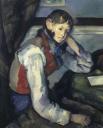Many of us have been to an auction of some sort in our lives, perhaps at a school or hospital fundraiser. Art auctions run very much the same way, but a little more research is involved when bidding on a painting than on a deep sea fishing trip. Here are the basic steps one would need to take to buy a work of art at auction.
First, purchase the auction catalogue. The catalogue will usually identify the artist, the name and date of the work, and the estimate for each work of art. The estimate is the price for which the auctioneer thinks the work will sell and is often expressed as a range from low to high. For example when a catalogue reads “Estimate $10,000-$20,000” the low estimate is $10,000 and the high estimate is $20,000. A work may sell at, above or below the estimate. Often there is other very important information in the catalogue such as condition, provenance and previous sales or publications of this work.
Next, attend the auction preview and see the works of art in person. Auction houses will designate times when the works for sale will be on display for potential buyers to examine. You should ask questions of the experts present at the preview. They are there to help potential bidders to learn more about the auction’s offerings. They will often be able to tell you what kind of interest there has been in the lot from other potential bidders.
Third, do your research. You should learn as much as you can about prior public sales prices for the work of art up for auction (if any) so that you can make an educated decision about how much you are willing to pay for it this time around. Read about the artist and the work as well so that you know what you are potentially buying. Is this work from the artist’s best period? Is this work unusual or typical of her work? How does it compare with her other known works? Has this work been documented? Are there any potential provenance issues about which you should be concerned? Another critical element of the research process is condition. Ask the auction house for a written condition report about the work. If a written report is not available, a verbal report is better than nothing. Consider hiring an expert to go in to the preview as well and examine the work. With some types of art this is critical.
Fourth, set your limits for bidding. It is important to know how much you want to spend on a work before the auction begins and the adrenaline starts pumping. Do not forget to add in any buyer’s premium that will be assessed by the auction house. Such information is usually disclosed in the auction catalogue. There are bidders who simply go to an auction and bid with their hearts, but common sense dictates that most people set an upper limit pre-sale.
Fifth, and finally, register with the auction house in advance so that you get a paddle number. Once you set up the account, and the day of the auction has arrived, you take your paddle and find a spot in the auction room where you can see and hear the auctioneer. (Alternatively, you may arrange to bid by phone or through an auction house representative. Another alternative is to leave a written or on-line bid in advance.) When the auctioneer announces the lot number and name of the work you wish to bid on you simply raise your paddle. Be sure that the auctioneer has acknowledged your bid or you could get left out. You should also try, if possible, to exercise some restraint and patience in bidding so that you can see who your competition might be. Often bidders will wait until the last minute to jump in and bid on an item. If your bid is successful the auctioneer will ask to see your paddle and will write down your number for payment purposes. All you have to do now is pay for the lot and arrange to get it to your home.
There are lots of tricks the pros use in bidding, but these are the basics. The best advice is to attend a few previews and auctions in person before bidding yourself so that you get comfortable with the process.
 Armed thieves entered the E.G. Buehrle Collection, a private museum for Impressionist art, in Zurich on Sunday and made off with approximately $163 million worth of art. The four men, clad in ski masks, are said to have pulled up in front of the small museum in a white van, entered through the main entrance and the single gunmen held the staff on the floor with his gun while two men took the four paintings from the wall. The four works stolen in the heist include Vincent Van Gogh’s “Blooming Chestnut Branches”, Claude Monet’s “Poppy Field at Vetheuil”, Edgar Degas’ “Ludovic Lepic and His Daughter” and Paul Cezanne’s “Boy in the Red Waistcoat”.
Armed thieves entered the E.G. Buehrle Collection, a private museum for Impressionist art, in Zurich on Sunday and made off with approximately $163 million worth of art. The four men, clad in ski masks, are said to have pulled up in front of the small museum in a white van, entered through the main entrance and the single gunmen held the staff on the floor with his gun while two men took the four paintings from the wall. The four works stolen in the heist include Vincent Van Gogh’s “Blooming Chestnut Branches”, Claude Monet’s “Poppy Field at Vetheuil”, Edgar Degas’ “Ludovic Lepic and His Daughter” and Paul Cezanne’s “Boy in the Red Waistcoat”. 

